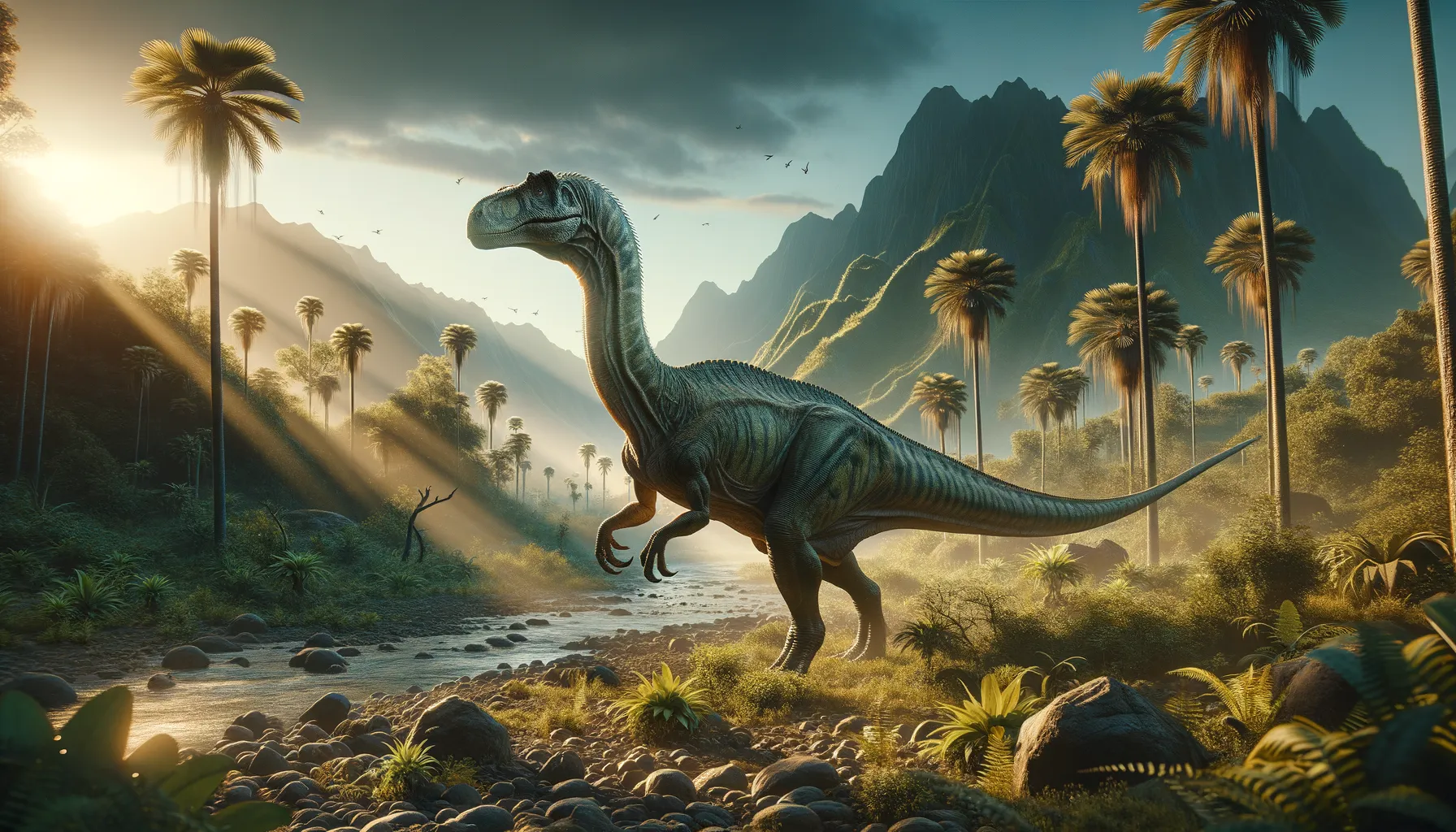
Leyesaurus
Graceful giant of the Jurassic era.
Period
Jurassic
Length
Measured around 9 meters in length.
Height
Approximately 3 meters tall at the shoulder.
Weight
Estimated to weigh around 2 tons.
Leyesaurus was a plant-eating dinosaur from the early Jurassic period. Found in Argentina, it's known for its long neck and tail, characteristic of sauropods, allowing it to feed on high vegetation. Though not the largest of its kind, Leyesaurus played a crucial role in the ecosystem, grazing and enabling vegetation growth. The discovery of this dinosaur helps paleontologists understand more about sauropod evolution and their distribution across ancient Gondwana.
Diet
Leyesaurus was herbivorous, feasting on a variety of plants. Its long neck helped it reach high branches and vegetation, allowing it to access food that other herbivores could not.
Hunting
Being a herbivore, Leyesaurus did not hunt but grazed peacefully. It relied on its size and herd movement for protection against predators.
Environmental challenges
During its time, Leyesaurus faced challenges such as climate shifts that affected plant availability. Predators posed a threat, requiring constant vigilance and possible herd protection. Additionally, natural disasters like volcanic eruptions would have also posed dangers, likely impacting both the dinosaur's habitat and food sources.
Speed
Estimated to have been relatively slow.
Lifespan
Unknown, typical for small sauropods.
First discovery
Discovered in the Los Colorados Formation, Argentina.
Fun Facts
- Leyesaurus was a small, plant-eating dinosaur that lived over 200 million years ago during the Early Jurassic period.
- This dinosaur's fossils were discovered in Argentina, a country well-known for its rich dinosaur history.
- Leyesaurus belonged to a group of dinosaurs called sauropodomorphs, which are ancestors of the famous long-necked sauropods.
- It was named after the Leyes family, who supported the paleontologists working in the region where its fossils were found.
- Leyesaurus walked on two legs and is estimated to have been around 2 meters long, making it one of the smaller members of its group.
- The discovery of Leyesaurus helps scientists understand the early evolution and geographical spread of sauropodomorph dinosaurs.
- Despite its small size, Leyesaurus had a long neck that helped it forage for food from trees and shrubs.
Growth and Development
Leyesaurus likely experienced a relatively rapid growth period post-hatching. Like other sauropods, it is believed to have reached near-adult size in just a few years. Growth would have slowed as it reached maturity, focusing resources on reproduction rather than further size increase.
Habitat
Leyesaurus roamed the ancient forests and plains of what is now Argentina. The region was rich in vegetation, providing ample food resources. It lived in a warm climate with significant seasonal variations, influencing its feeding and migratory patterns.
Interaction with other species
Leyesaurus likely coexisted with other herbivorous dinosaurs, sharing the same vegetation resources. Predatory dinosaurs would have been its primary threat, shaping its social behavior within its habitat. Herbivores often banded together in groups, offering mutual protection from predators.
Natural lifespan
Lifespan likely varied with environmental conditions and predator pressures.
Reproduction
Reproduction likely involved egg-laying, with nests built in secluded areas to avoid predators. The parental involvement after laying eggs is not clearly understood, but some parental care might have been present to protect the young until they were somewhat self-sufficient.
Social behaviour
Leyesaurus might have lived in herds, a behavior common among sauropods for protection against predators. Social hierarchy within such groups could have been based on size and age, with larger, more mature individuals holding dominance.
Fossil locations
Leyesaurus fossils have predominantly been found in Argentina. These fossil sites provide valuable insights into the dinosaur fauna of the Jurassic period in South America. The findings are crucial for understanding the broader distribution of sauropods across ancient landmasses.
